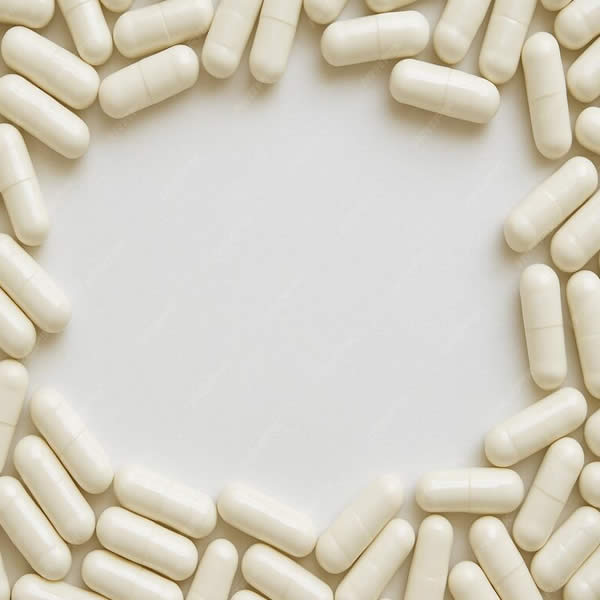We have the expertise to manufacture any type of nutraceutical capsule formula, with a focus on supporting your long-term private label capsule manufacturing success. Our team is committed to partnering with you to efficiently scale and grow your vitamin manufacturing business.
Before encapsulation, your formula is blended to ensure uniform distribution of ingredients in every capsule.
After the ingredients are thoroughly blended, they are filled into capsule shells, which are typically made from gelatin, vegetable-based materials, or pullulan, depending on the formula.
Each capsule is polished to remove excess powder for a clean, finished appearance and then carefully inspected for any defects.
After manufacturing and post-inspection, we perform identity, potency, microbial, and heavy metal testing to ensure pharmaceutical-grade quality.

CERTIFICATIONS
We have the expertise to manufacture any nutraceutical capsule formula. From sourcing every ingredient to post-encapsulation inspection, we handle the entire process at competitive prices and with the fastest lead times.
Our experienced team can help you develop a new product tailored to your target audience or guide you in scaling your production efficiently.
As your trusted partner, we are committed to your long-term success in capsule manufacturing.
Get a Custom Capsule Quote
Capsules are among the most versatile and widely used forms of encapsulation for nutraceutical products. We’re here to support you with all your stock or custom capsule manufacturing requirements.
Before a capsule is ready to be filled, the formula must be carefully prepared for encapsulation. The capsule contents are typically processed using one of the following methods:
Wet Granulation Process
Dry Granulation Process
During the wet granulation process, the prepared supplement blend is first thoroughly mixed. Water is then gradually added to the dry blend, moistening the powder and forming a thin, immobile layer of water between the particles. As more water is introduced, this layer thickens and eventually penetrates the pores of the particles, promoting the formation of granules.
Once the water has been added to the blend, the next step is to remove it through evaporation. This process helps the mixture strengthen and bind together. As the water evaporates, the particles develop strong adhesion, causing them to cluster and form larger granules. The final particle size is influenced by various factors, including the blend’s composition, density, and the type and quantity of binders used.
The final stage of the wet granulation process is drying, which ensures the blend remains stable within the capsule and prevents any spilling. For smaller batches, a tray drying oven is typically used. In larger-scale or automated production, fluid bed dryers are preferred. These dryers use a controlled stream of warm, dehumidified air that flows through the base of the drying chamber. A fine mesh is installed to keep the powder securely in place, preventing it from being blown out during the drying process.
The dry granulation process is typically used when a product’s blend is sensitive to moisture or heat and cannot undergo wet granulation. Unlike wet granulation, no liquids are added during this method. Instead, the prepared powder blend is fed into specialized equipment that applies intense pressure to compress the powder, increasing its bulk density and cohesiveness. The amount of pressure required depends on factors such as the blend’s composition, the properties of its ingredients, and the desired final density.
Manufacturing a nutraceutical capsule isn’t complete until the prepared formula is filled into the capsule shell.
To create the capsules, all necessary materials are first collected. These materials are combined with hot demineralized water and mixed under vacuum in specialized machinery. Gradually, additional hot water is added along with dyes and opacifiers if required. Once the mixture reaches the proper consistency, it is molded around stainless steel pins to form the desired capsule size and shape.
The molded capsule halves are then carefully dried under controlled temperature and humidity conditions to ensure optimal drying. After drying, the cap and body of each capsule are precisely trimmed to a 0.15 mm tolerance. Finally, the two halves are assembled, resulting in finished capsules that are ready to be filled with the nutraceutical blend and prepared for distribution.
Capsule shells are typically made from either gelatin or plant-based, vegetarian-friendly materials:
Gelatin capsules are produced using animal-derived ingredients, such as bones and cartilage. A primary source for these capsules is bovine collagen.
Vegetarian capsules are typically made from hypromellose (HPMC) or pullulan, a water-soluble polysaccharide derived from the fermentation of starch.
The minimum order quantity (MOQ) for capsules depends on whether you are choosing a stock formula from Nutrabiotics or a custom formulation:
Stock Capsule Products: MOQs can start as low as 1,000 bottles, depending on the formula.
Custom Capsules: The MOQ is typically 150,000 pieces (for example, 2,500 bottles of 60-count capsules).
Gelatin is ideal for capsule manufacturing because it helps protect the contents from contamination, light, microbial growth, and other potentially harmful factors.
In many cases, a formulation is better suited for capsules. Capsules are generally easier to swallow and tend to dissolve more quickly than tablets once ingested.
The choice depends on the product you plan to bring to market. Some customers have no preference between gelatin and vegetarian capsules, while others specifically look for one type over the other.
Nutrabiotics provides a broad selection of high-quality stock capsule formulas. Contact us for any questions or to learn more about our available stock options.